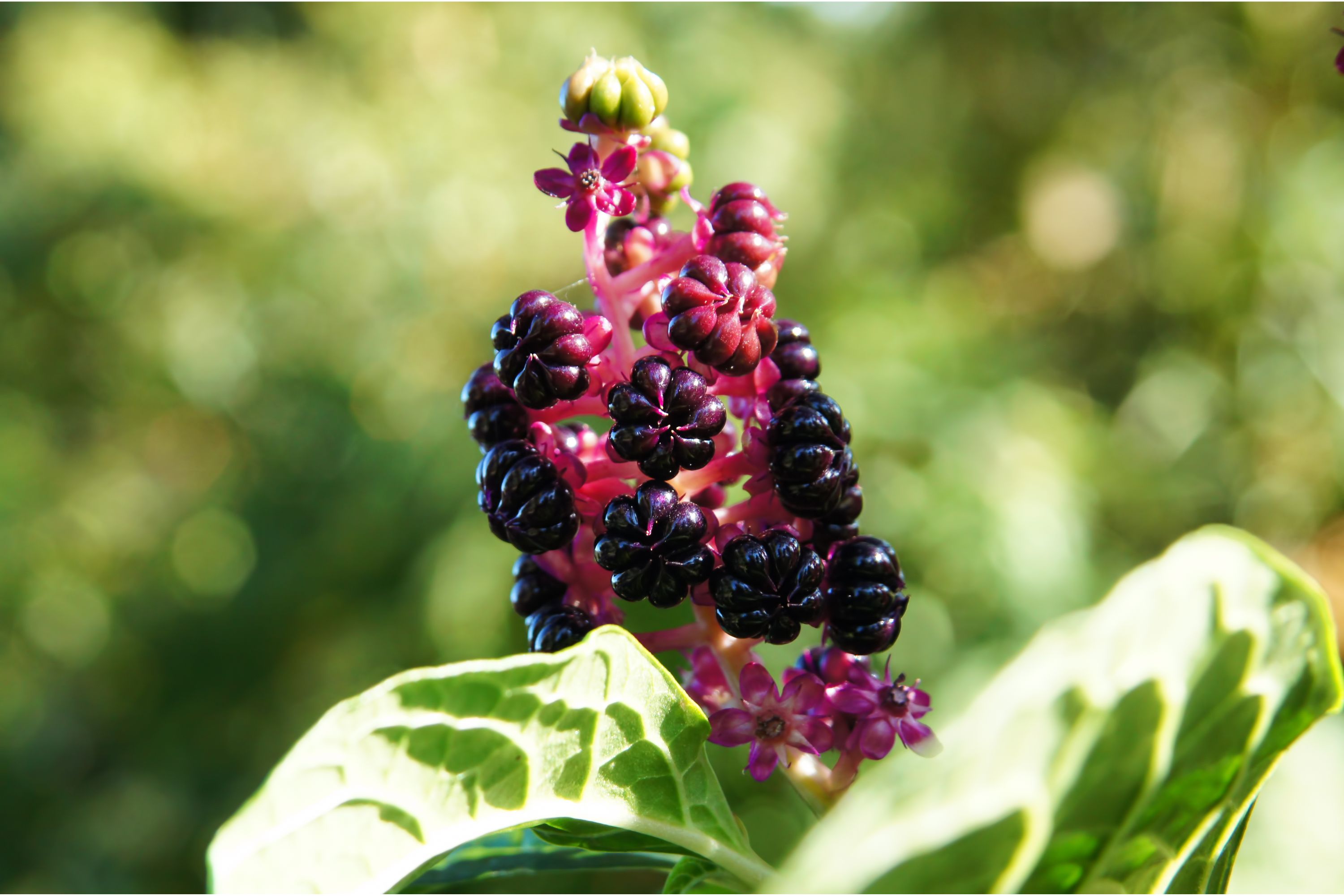Indian pokeweed
(Phytolacca acinosa)

Description
Phytolacca acinosa, commonly known as Indian pokeweed, is a plant species belonging to the family Phytolaccaceae. It is a perennial herbaceous plant that is native to China, India, and Southeast Asia. The plant has a variety of uses and has been used in traditional medicine for centuries. This article will explore the botanical characteristics, distribution, traditional uses, and modern applications of Phytolacca acinosa. Botanical Characteristics: Phytolacca acinosa is a tall, herbaceous plant that grows up to 3 meters in height. The stem is thick and woody at the base, becoming more slender towards the top. The leaves are simple, alternate, and elliptical, measuring up to 30 cm in length and 15 cm in width. The flowers are small, white to pink in color, and arranged in long, drooping clusters. The fruit is a fleshy berry that is dark purple to black in color, containing many small, black seeds. Distribution: Phytolacca acinosa is native to China, India, and Southeast Asia. It grows in a variety of habitats, including forests, grasslands, and riverbanks. The plant is also cultivated in many parts of the world, including the United States, where it is grown as an ornamental plant. Traditional Uses: Phytolacca acinosa has a long history of use in traditional medicine. The roots, leaves, and berries of the plant are all used for various medicinal purposes. In traditional Chinese medicine, the root is used to treat arthritis, rheumatism, and other inflammatory conditions. The leaves and berries are used to treat skin conditions, including eczema and psoriasis. In India, the plant is used to treat a variety of ailments, including fever, dysentery, and respiratory infections. The root is also used as a natural remedy for constipation and as a diuretic. The juice of the leaves is used to treat earaches, and the berries are used as a natural dye. Modern Applications: Phytolacca acinosa has gained popularity in recent years as a natural remedy for various conditions. The plant has been found to contain several active compounds, including phytolaccagenin, phytolaccasaponin, and phytolaccamidine, which have been shown to have anti-inflammatory, anti-cancer, and anti-viral properties. Research has shown that Phytolacca acinosa has potential as a treatment for cancer. Studies have found that the plant contains compounds that can inhibit the growth of cancer cells and induce apoptosis, or programmed cell death, in cancer cells. One study found that a compound isolated from the plant was effective against breast cancer cells. Phytolacca acinosa has also been found to have anti-viral properties. Studies have shown that the plant can inhibit the replication of several viruses, including influenza A and B viruses, hepatitis C virus, and herpes simplex virus. Conclusion: Phytolacca acinosa is a plant species with a long history of use in traditional medicine. The plant has a variety of uses, including treating inflammatory conditions, skin conditions, and respiratory infections. Modern research has shown that the plant contains several active compounds with potential as treatments for cancer and viral infections. As with all natural remedies, it is important to consult with a healthcare professional before using Phytolacca acinosa for any medicinal purpose.
Taxonomic tree:







